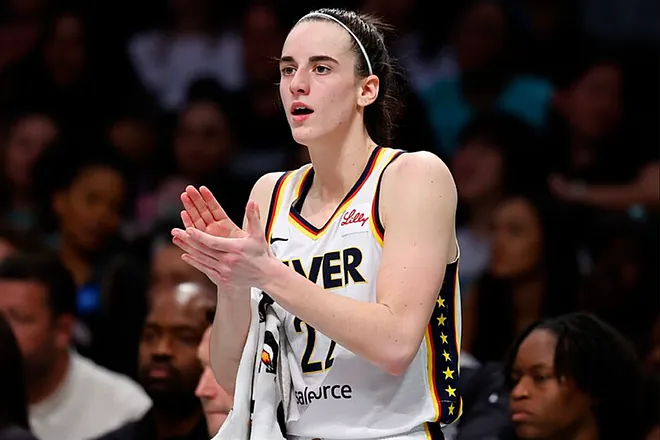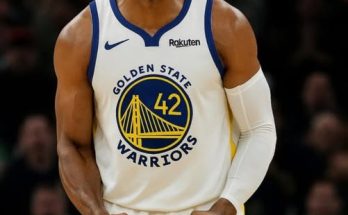Caitlin Clark’s injury sent shockwaves through the WNBA world—but perhaps not for the reasons you’d expect. When the No. 1 overall pick in the 2024 WNBA Draft limped off the court, holding her side in visible discomfort, the concern was immediate. But the pain on her face and the collective gasp from the crowd weren’t just about a star player potentially missing time. They were about what her absence exposed: a deeper, more troubling reality within the Indiana Fever organization.
The Fever were supposed to be ready. After years of languishing at the bottom of the standings, Indiana had seemingly hit the reset button, first selecting Aliyah Boston in the 2023 draft and then doubling down with Caitlin Clark—a generational shooter and the most hyped rookie since Diana Taurasi. On paper, this duo was supposed to resurrect a franchise once home to legends like Tamika Catchings. In practice, the team’s lack of cohesion, experience, and structure have turned Clark’s rookie campaign into a baptism by fire.
Her injury—thankfully not season-ending—feels symbolic more than anything. It marked a moment where the Fever’s deeper issues could no longer be ignored or overshadowed by hype videos, sold-out arenas, and record-breaking viewership numbers. This wasn’t just about a rookie taking her lumps. It was about an organization failing to insulate its biggest asset, failing to build around her in a way that would ensure both her development and long-term safety.
Let’s start with the roster construction. The Indiana Fever, quite frankly, look like a team still in rebuild mode, not one ready to support a transcendent rookie. The spacing has been poor, the shot selection erratic, and the offensive system almost nonexistent. Clark is being asked to do far too much, too soon, with too little help. Opposing defenses know exactly what’s coming and are throwing multiple bodies at her every time she crosses half court. The physical toll is immense, especially in a league as fast and hard-hitting as the WNBA, and it was only a matter of time before that pressure took a toll on her body.
There’s also the issue of coaching. Christie Sides is in her second year as head coach, but this team hasn’t shown much in the way of strategic progression. The offensive schemes often resemble organized chaos, with possessions breaking down into isolation plays or forced three-point attempts. Clark, known for her deep shooting range and flashy passes, thrives in structured freedom—a paradox that only works when surrounded by capable scorers, strong screens, and a system that balances creativity with discipline. She has none of that right now.
Worse still, there seems to be a failure in understanding who Caitlin Clark is and how she plays. Clark isn’t just a three-point machine or an offensive engine. She’s a floor general who elevates teammates when the chemistry and system allow it. But with the Fever, she’s being treated as a savior—expected to score, distribute, defend, and lead a franchise all at once. That’s not development. That’s exploitation.
Aliyah Boston, last year’s top pick and an All-Star as a rookie, has also seen her production dip. Part of that is opposing defenses tightening up now that Clark is on the floor. But part of it, too, is confusion in roles. Boston and Clark should be the foundation of a devastating pick-and-roll attack, yet their chemistry looks inconsistent and underdeveloped. That’s not on them. That’s on the coaching staff and front office, who had months to build a plan around these two and seemingly failed to do so.
And then there’s the matter of physicality. Clark has been hit hard in almost every game she’s played. Some of it is standard for a rookie adjusting to the physicality of the pros. But some of it has crossed the line. The WNBA is a league filled with proud, hard-working veterans who don’t take kindly to media darlings. Clark has been on the receiving end of elbows, hip-checks, and borderline flagrant fouls from players trying to make a statement. That’s part of the game, sure—but where’s the response from her team? Where’s the retaliation? Where’s the sense of collective protection?
Too often, Clark is picking herself up off the hardwood alone. There’s a glaring absence of urgency from her teammates in rallying to her defense, both literally and figuratively. That’s not just bad optics—it’s bad culture. It suggests a team that isn’t fully connected, a locker room without a unifying voice, or worse, one with underlying tension or resentment.
You could chalk some of this up to jealousy or growing pains, but that’s the easy narrative. The truth is, the Indiana Fever didn’t lay the groundwork to bring in a player like Clark. They didn’t anticipate the media firestorm, the extra pressure, or the target that would inevitably be placed on her back. They wanted the benefits—ticket sales, television exposure, jersey revenue—but didn’t prepare for the responsibility that came with drafting a superstar.
Now, as Clark rehabs from her injury and evaluates her early WNBA experience, the Fever are left with uncomfortable questions. Are they doing enough to protect her, both physically and mentally? Are they building a roster that will maximize her generational talents? Or are they simply riding the wave until it crashes?
This situation has echoes of past failures in both the WNBA and NBA. You can’t just drop a No. 1 pick into a broken system and expect magic. For every LeBron James who lifts a franchise instantly, there are a dozen top picks whose careers stall out in dysfunctional environments. Caitlin Clark is too good, too smart, and too driven to let that happen to her—but it shouldn’t be on her alone.
The front office needs to act—and soon. That means re-evaluating the coaching staff, bringing in veteran leadership who can mentor and protect Clark, and rethinking the offensive identity of this team. It means finding shooters who can space the floor, screen-setters who will absorb contact, and defenders who will hustle for every possession. In short, it means treating Caitlin Clark not just as a marketing tool, but as a cornerstone of a championship-caliber future.
Because if they don’t, the consequences could be long-lasting. Injuries like the one Clark sustained don’t just disappear. They linger, both physically and psychologically. They erode confidence and momentum. And if Clark starts to believe the organization around her isn’t serious about winning—or worse, doesn’t have her back—it won’t be long before frustration replaces hope.
This league needs Caitlin Clark. The WNBA has never been more visible, more exciting, or more poised for growth. But growth only happens when teams nurture talent, not exploit it. When they build cultures that inspire loyalty, not indifference. When they protect their stars, not leave them isolated in the storm.
The Indiana Fever have been gifted something extraordinary in Caitlin Clark. But gifts require care. They require intention, strategy, and humility. It’s not enough to say “we’re lucky to have her.” They have to prove they deserve her.
Her injury was a warning shot—not just to the Fever, but to every team in the WNBA. You can’t shortcut development. You can’t coast on stardom. And you can’t ask a 22-year-old rookie to carry the burden of an entire franchise without building the foundation to support her.
Caitlin Clark will recover. She’ll bounce back. She always does. But what about the Fever? Will they look in the mirror and admit they’ve failed her so far? Will they have the courage to make hard decisions and necessary changes?
Or will they keep treating symptoms while ignoring the disease?
Time will tell. But the clock is ticking. And Caitlin Clark deserves better than a franchise still figuring itself out at her expense.



